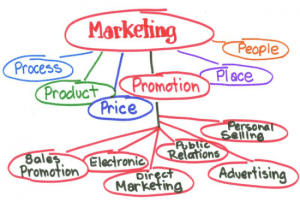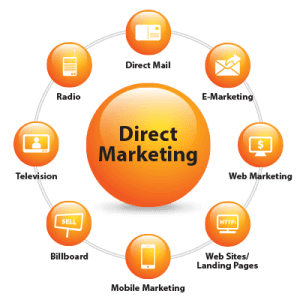We are hosting the Bath indie chat hour today and our topic of conversation is Marketing for small businesses. Our main 4 questions are listed below with our thoughts and advice covering each to serve as a support guide to fellow indie’s who need help with their marketing strategy.
Small business owners have many problems they face in marketing their business. In working with many B2B and B2C small businesses, we have found that there are four main problems that constantly surface that need attention to achieve small business marketing success.
1. How do you manage your time to concentrate on marketing?
Time management is the first big problem. If you are lamenting, you don’t have enough time in the day to get things done you’re not alone. Spending your time on the important issues separates those that achieve success and those that muddle along. Are you identifying your three to five daily rocks, the important and urgent priorities you need to address each day? These are the 20% of actions you take which yield 80% of your productivity. Here are four keys to successful time management they include:
- Write down 3 to 5 of your most important & urgent marketing priorities daily.
- Your daily tasks must be specific no vagaries allowed!
- Hold yourself accountable for achieving your daily tasks
- Be proactive not reactive with your marketing, plan your time wisely.
Many small businesses fall foul of the “all or nothing” marketing cycle. This being that when a small business is experiencing a busy period, marketing takes a back seat. Then when a quieter period arrives, we panic and throw out a torrent of marketing in all directions. Business picks up again and the cycle continues.
2. How do you identify who best to market your business to?
Target market identification is another big problem we often encounter. Many small business owners incorrectly describe their target market as everybody. If you hear yourself describe your target market as you can sell to everyone, then you may want to rethink that position. Everyone is a big target market.
Defining your real target market and knowing the size and scope of that target market is step one. Step two is to analyse within your specific target market how many different market segments there are that you can realistically serve. Now you are in a position to establish resource allocations necessary to efficiently and effectively mount the proper marketing campaign that will produce a satisfactory sales outcome. Thinking you can sell to everyone creates a loss of focus on your marketing efforts. Your resources of pounds, time and energy that are not focused will yield a poor result.
Try creating Client Personas. Client personas not being researched is a frequent missing marketing ingredient too. Not having researched and created client personas of a business’s ideal clients are just as important as identifying the target market. Why? Because defining a client persona allows you to uncover the important marketing communications message points you will need to reach, resonate and convert sales prospects to clients in your target markets. Creating a client persona will allow you to:
- Immerse yourself in your customer’s skin.
- Uncover client pain points, investigate their top 5 issues to their business and create a solution for them. Tell them how you can help!
- Discover the language or terminology used by your prospective clients.
- Learn where to look and find your potential clients, where do they hang out? Online, social media, business breakfasts, networking events?
These are critical necessities in developing customer-centric marketing messages in today’s content marketing.
3. Do you set a marketing plan and a budget to follow your plan?
No marketing plan and no budget! It is amazing how many small businesses have no marketing plan and no formalised budget. Expecting success without these marketing fundamentals is a sign of hoping for success instead of planning for it.
Planning your marketing and establishing a budget is not that hard to do. There are plenty of free resources available for writing a marketing plan and creating a basic budget. The benefits of performing these tasks are many.
- Establishes business goals & objectives to evaluate success
- Defines business opportunities
- Instrumental in defining your target markets
- Identifies your value proposition
- Outlines key marketing messages
- Eliminates knee-jerk wasteful spending
Investing your time and effort in a marketing plan and budget will increase your success and save hundreds of pounds in marketing expense.
Focusing on marketing tactics versus marketing strategy is the last most common problem with small business owners. Mistaking marketing communication channels as marketing is commonplace. Many people approach small business promoting “marketing” as telemarketing, email marketing, social media marketing, web marketing, etc. No wonder small business owners get confused. None of these activities are marketing, they are marketing tactics used as part of the overall marketing process to deliver your business’s marketing messages.
The solution to this problem is easy. Get a real marketing plan not a so called instant solution or waste money on the “hot” marketing fad at the moment. There are many good ways to distribute your marketing message. A strategic plan that evaluates which communications distribution options are best suited to reach your market and convert prospects into sales for you will prevent you from wasting your time and money.
4. Are you using multiple marketing techniques? Multi-channel marketing increases brand awareness and creates a larger spend.
Marketing touch points are any methods or modes of contact between a company and the consumer. Touch points can be face-to-face discussions, promotional fliers, online ads and anything else that involves a business marketing message, brand name or logo reaching the customer. The amount and effectiveness of your small business marketing touch points can determine your level of success and the ways your marketing can be improved.
In Store.
If you have a shop, in store touch points vary by the type of small business you run. If you have a clothing store for example, your touch points are the team on the floor, the register at checkout, in-store point-of-sale and posters, leaflets or postcards in the customer’s bags and the receipt every customer receives after a transaction. These touch points can be used as marketing tools but will require separate approaches. For example: your team can inform shoppers of a sale on jeans so they know about current promotions. Point of sale posters, banners, leaflets or window displays will inform customers of sales or new products. Your cashiers can offer discounts on purchases or upsell complementary products and place printed marketing material in their bags. Your receipts can print with promotional coupons that offer 20 percent off the next purchase of £50 or more for example to give your customers an incentive to return.
Electronic. (Website and Social Media)
Electronic touch points can play a large role in your marketing strategy. Electronic touch points are more measurable than some others in their efficiency, because records of clicks, click-throughs and orders can be obtained in most cases. Electronic touch points include email communications, clickable banners, social media pages and any other means of creating contact with your customer base online. The people you attract with electronic touch points may be different than those you contact through more traditional means, and your marketing should reflect that difference. Electronic marketing will need multiple hits or views to deliver sales and if this is your only marketing avenue beware you may be missing out on a large proportion of your potential customer market. With so many like for like businesses competing for the same customers online, you really need to stand out from the crowd or risk getting lost in the barrage of social media and email marketing.
Mail and Print.
Print materials distributed in local newspapers, Magazine ads, by hand or through targeted marketing campaigns in the mail, bring your marketing message home. These more traditional marketing touch points are just as effective, as they do not require the client to initiate contact through in-person or webpage visits. Print marketing can be distributed to existing clients as a method of retention or randomly as an attempt to bring in new customers. In either case, print marketing touch points can be more costly than electronic and in-store campaigns but can bring dividends if your customer base is expanded. Printed marketing is tactile, hangs around longer and can generate higher spending customers with regular contact. Printed marketing can also help to drive customers to your website for more information or to take advantage of special offers or discount codes. Print is going through a renaissance currently. Receiving a well-designed, interesting, tactile and physical item in the post has become somewhat of a novelty as more businesses cost cut and promote solely online.
Customer Service.
The customer service experience is a valuable and difficult touch point to manage. It often has a tremendous bearing on the consumer’s opinion of your small business and whether or not they will continue to purchase your goods and services. If a customer has a difficult time with a customer service problem or leaves the situation unsatisfied, they will likely be on the lookout for a new place to shop. The customer service touch point involves more personal interaction than most other marketing touch points. It usually involves a client who is already unhappy with their overall experience and who has initiated contact with your business. As a small business, the personal relationship you build with each client can be the most important marketing touch point there is. Remember: people buy from people they like.
Finally.
When you’ve aligned and analysed all of the marketing touch points your small business uses to contact its customers, they can provide you with a guide to what is working and what isn’t. An in-depth analysis of this data can help to make your marketing more efficient by revealing which touch points are underachieving and which are overachieving, which cost too much and which are more affordable. A lack of touch points in a given area or an overabundance in another can also lead to less than ideal marketing return on investment. Understanding how and why your touch points should be spread out will help make your small business marketing more efficient and effective.
To conclude:
Knowing your marketing problems and seeking out solutions is the first step to achieving marketing success.




